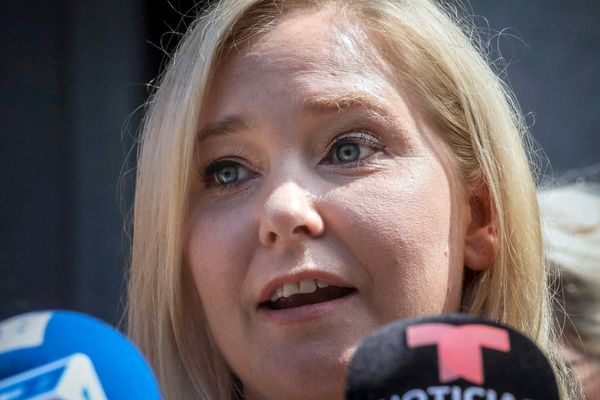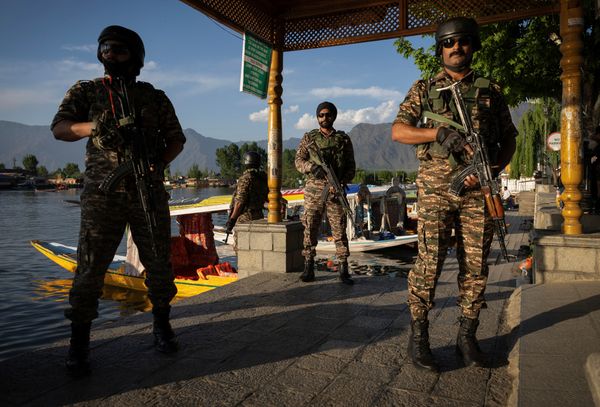
Usually you need a few genuine releases under your belt before you start putting out “greatest hits” albums, but when it comes to spruiking nuclear this hasn’t stopped Peter Dutton.
This week, the opposition leader gave a speech that some hoped – perhaps naively – would add some more detail to the Coalition’s scant policy proposal to build nuclear reactors at seven sites around Australia.
But instead, Dutton delivered a familiar run-down of “greatest hits”; nuclear will mean cheap power, everyone else is going nuclear (so why shouldn’t we?), and renewables are unreliable (did you know, for example, and I bet you didn’t, that “solar panels don’t work at night” or that “turbines don’t turn on their own”?).
Perhaps Dutton is banking on the illusory truth effect where, regardless of the truthfulness of a statement, the more people hear it the more they’re inclined to accept it.
So far there are no costings, no details on what type of reactors or how large they will be, or who will build them. We do know Dutton wants to fund them through the taxpayer.
But let’s run through the track listing.
Renewables-only redux
Take, for example, Dutton’s claim in his speech, at the Centre for Economic Development Australia in Sydney, that Labor is pursuing a “renewables-only” policy for the electricity grid – a phrase he repeated seven times.
Just as it has been for many months, the “renewables-only” claim is false.
While it’s true Labor does want the electricity grid dominated by solar and wind, backed up by storage such as batteries and pumped hydro, the current plan also includes gas-fired power that would act as back-up if solar or wind levels dropped too low.
According to the Australian Energy Market Operator’s (AEMO) latest blueprint, the electricity industry thinks Australia will need to increase gas-fired capacity from 11.5GW now to 15GW in 2050.
The amount of power actually being produced from gas will be about the same in the decade up to 2050 as it is now.
AEMO’s plan lays out an electricity market that it says can meet Australia’s climate targets, is in line with current legislation (which excludes nuclear), and will be the cheapest and most reliable.
So when Dutton says, as he did several times in his speech, that renewables can’t do the job, it is worth remembering that AEMO’s detailed modelling on reliability says that with batteries and pumped hydro, and some gas as a backup, renewables can.
AEMO has said it’s worried that the clean energy roll out is going too slowly. But Dutton’s solution is for a technology that is unlikely to be generating any power before the end of the next decade.
What happens between now and then? The Coalition admits it will mean burning more gas, and keeping some coal-fired plants already struggling with reliability issues burning for longer.
A $1.5tn cost?
For months, conservatives have been trying to link the cost of living pressures being felt by many Australians to policies to move away from fossil fuels, even though there is almost zero (shall we say, net zero) evidence to support that. Dutton also gave this record a spin.
In the speech, Dutton quoted Princeton energy expert Dr Chris Greig, who he said had put the “cost” for Australia’s renewables transition “as high as $1.5tn by 2030”. That figure actually comes from the major modelling work, Net Zero Australia, that Greig was part of.
But the $1.5tn figure by 2030 relates to capital investments for all decarbonisation of the economy, including the production of clean fuels. The 2030 figure that relates to clean electricity is just under $1tn (so that’s $500bn less than Dutton’s claim).
And remember, these investments – which Dutton describes as “costs” – contribute to economic growth and jobs.
Temperature Check asked Greig if he agreed with Dutton’s claims that Labor’s “renewables-only” approach – which includes gas – was not feasible.
He said provided investments were made quickly enough in renewables, transmission, gas generation and storage, such as batteries, “then I think [Dutton] is wrong”.
Greig said nuclear bans should be removed and the power source should get incentives, but said “we should be clear-eyed about the challenges of deploying nuclear power in Australia, and invest in robust, independent feasibility studies and risk assessments, before making any final investment decision.”
“In the meantime,” said Greig, “pressing on with renewables, transmission, batteries, pumped hydro and gas generation seems appropriate.”
28,000km – again
Also getting another go on the turntable was Dutton’s claim the government’s plan would require “28,000km of new transmission lines”.
The actual figure, according to AEMO, is 10,000km – or about a third of Dutton’s claim.
Only under a scenario where Australia gets very aggressive on green energy exports, such as hydrogen, does AEMO think you might need another 10,000km or more of transmission lines.
This has been pointed out before, but, like a broken record, Dutton continues to repeat it.
The nuclear train?
In a statement that will surprise nobody, Dutton said even if the various state and federal bans on nuclear power generation were lifted “we can’t switch nuclear power on tomorrow”.
“But what we can do is ensure that Australia doesn’t miss the nuclear train,” he said.
An independent report on the status of that global “nuclear train” was published last week.
The 500-page World Nuclear Industry Status report said in 2023 a record US$623bn was invested into non-hydro renewable energy, which was “27 times the reported global investment decisions for the construction of nuclear power plants”.
As of July, the report said there were 59 reactors under construction, 10 fewer than a decade ago, with almost half being built in China. Some 23 of those reactors were behind schedule.
Of the 13 countries currently building nuclear plants (that’s three less countries than last year), only China, India, and Russia had reactors being built at more than one site (Dutton is proposing reactors at seven sites).
The WNIS report says nuclear generated 9% of global electricity in 2023 – well down from the 1996 peak of 17.5%.
The Energy Institute’s global data also shows nuclear’s 9% compares to 30% for renewables (hydro, solar and wind combined).
Between 2022 and 2023, the institute’s statistical review shows the amount of electricity generated globally by solar went up 24% and wind rose by 10%. Nuclear saw a rise of 2%.
The train Dutton is worried Australia will miss appears, so far at least, to be travelling very slowly with not many new passengers on board.







